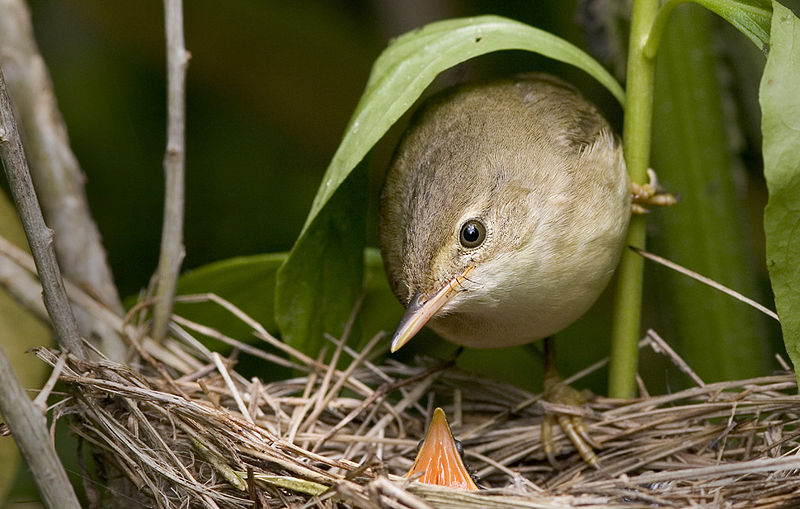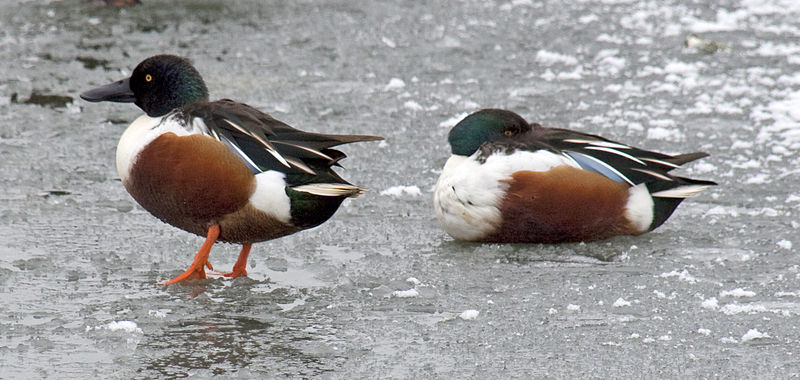
The report of the Rare Breeding Birds Panel is a treat, a delight, a pleasure. That’s partly because the Panel does a very good job in compiling the records and writing them up, and partly because British Birds does a good job in publishing them but largely because birds are brilliant!
In each of these pairs of species, which is the commoner breeding bird in the UK: Dartford Warbler or Arctic Skua; Avocet or Corncrake; Red Kite or Merlin; Hobby or Shoveler; Cirl Bunting or Mediterranean Gull; Hen Harrier or Bearded Tit; Goshawk or Golden Eagle; Capercaillie or Bittern; Garganey or Snow Bunting; Black-necked Grebe or Honey Buzzard; Pintail or Wood Sandpiper? (answers below).
Just like the value of your shares – the value of your bird populations can go down as well as up. If I had bought shares in Dartford Warblers or Cetti’s Warblers in my early days of birding I would already have cashed in at a huge profit, but if I had bought Savi’s Warbler or Marsh Warbler I would be cursing my ‘luck’. And, to be quite honest, I’m unsure as to why Cetti’s have done so well and Savi’s so unimpressively in the last 40 years. And back in 1970 I don’t think I could have chosen which out of Dartford and Marsh Warblers would do so well. I would not have invested, then, in Subalpine or Bonelli’s Warbler and yet each, now, is regarded as a ‘Potential breeder’. Birds are amazing.
The RBBP deserves our ongoing support. The year to year changes are interesting but it is only if the data are collated over a few decades that they become really valuable. County recorders are an important part of the machinery and their unpaid (and often unthanked) efforts deserve the thanks they get in this report. Do you have some records of breeding Pochard or Greenshank that you are sitting on? Well, please put them into the system – they will help to make a better national picture.
It’s a fascinating report – maybe worth the annual subscription to BB on its own, I always think. Thank you to the RBBP and the report just reminds me that birds are just amazing.
Answers: the whole list is in descending order of population size so the first of each pair is the commoner, with Dartford Warbler the commonest and Wood Sandpiper the rarest in the list.

This has brightened my spirits after yesterday! A fantastic resource particularly the Explore Reports feature which enables the user to plot their own graphs; you’d have lost a hefty sum on Dartford Warblers if you’d cashed in in 2010.
Shows the real value of long term monitoring. Which also shows the fantastic efforts made by BTO and the many recorders across the UK. But it also highlights what can be achieved with dedicated nature conservation effort – Darties, Bittern & Corncrake. Note sure why Nightjar not included (unless I missed it). Also shows the depressing stories as well, goes without saying Hen Harrier but that is also the power of this data.
Why would anyone dislike the RBBP blog?!
Out of the list you published the one that made my jaw drop was the Hen Harrier being above the Bearded Tit, very odd that I’ve seen more Beardies then Hen Harriers!
Douglas – Hen Harrier still have reasonable numbers breeding in Scotland, whereas Bearded Tit is heavily restricted to a fairly limited and restricted habitat.
Really interesting Mark,another very good blog showing either your knowledge or well researched blog.
Yes how can anyone dislike that blog.
Thanks Mark, for your kind words about the report – the Panel appreciates it. And your blog gives me the opportunity to salute the tremendous efforts of the Panel’s secretary, Mark Holling, who has worked tirelessly in the post. Not only do the reports he produces (with fantastic support from Roger Riddington and colleagues at British Birds) get better every year, but the data collation that underpins the report also improves thanks to his work building relationships, coercing and cajoling data from whoever holds it.
Great that you picked up on the vital role that county recorders play in providing data to the RBBP. And of course, no mention of the report should go without a tribute to the thousands of observers themselves – as with virtually all biodiversity monitoring in the UK, we’d be lost without them.